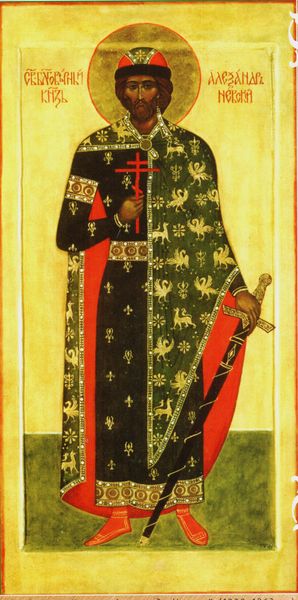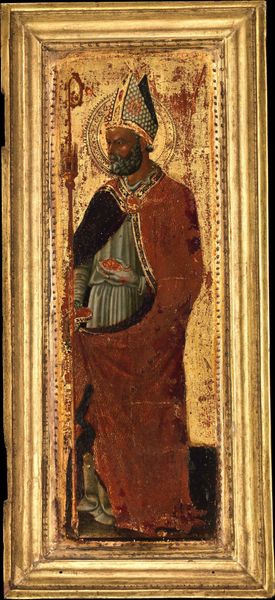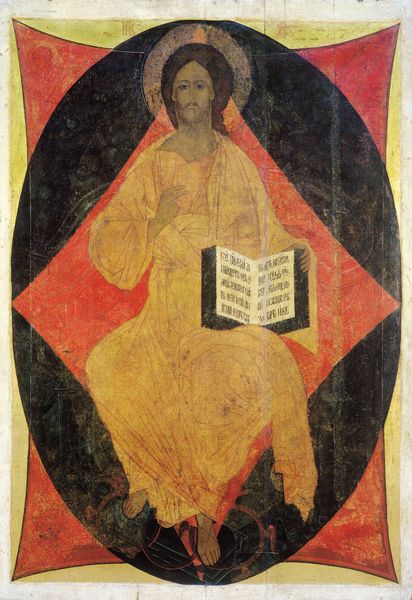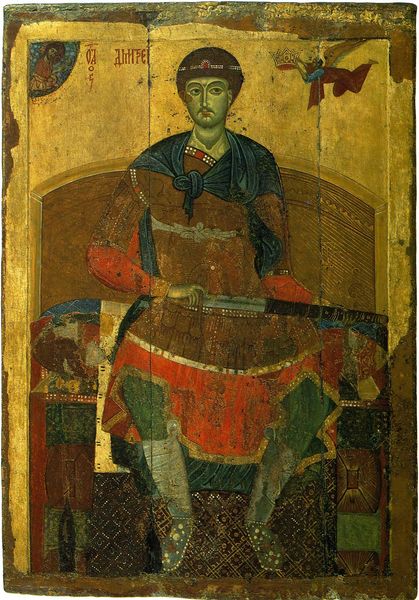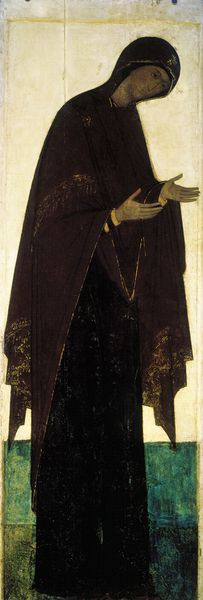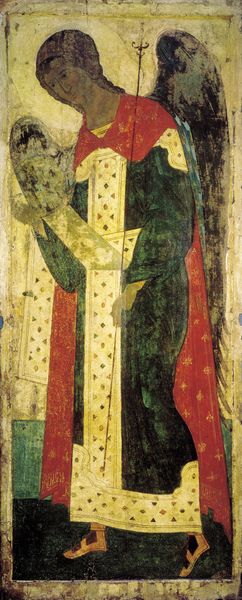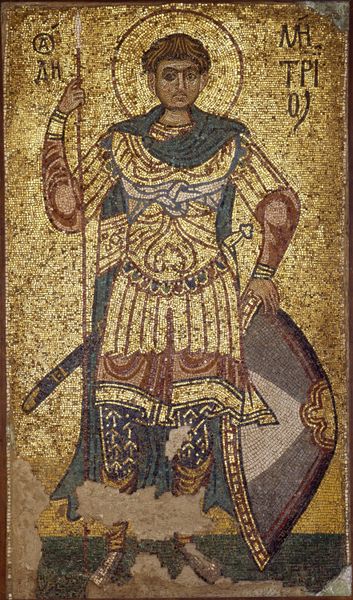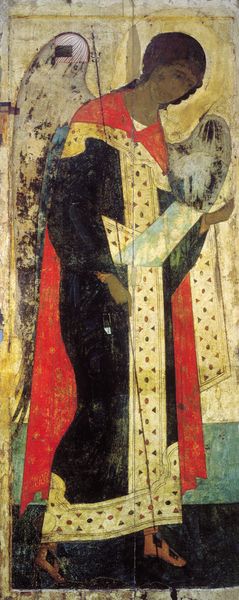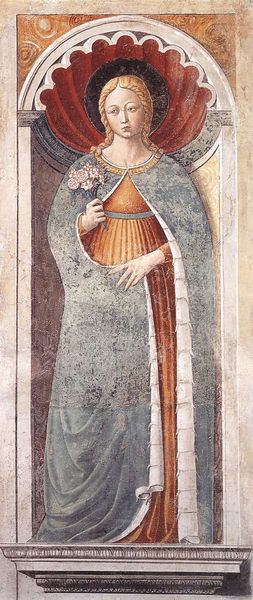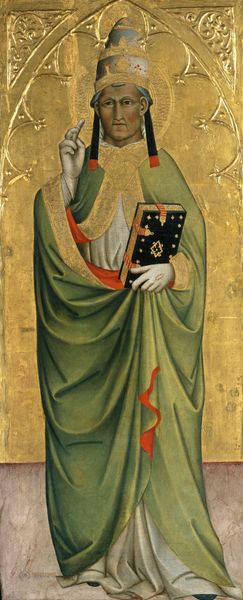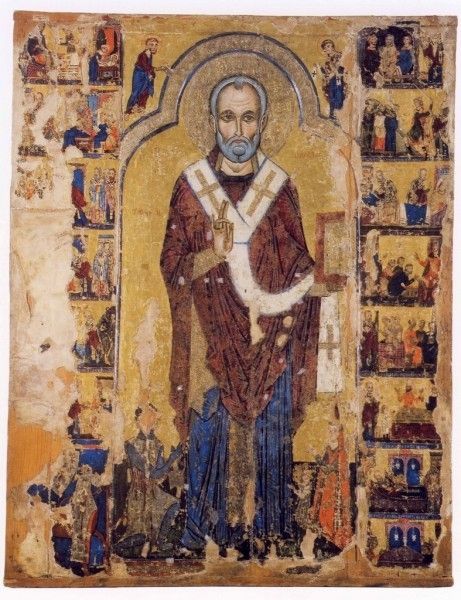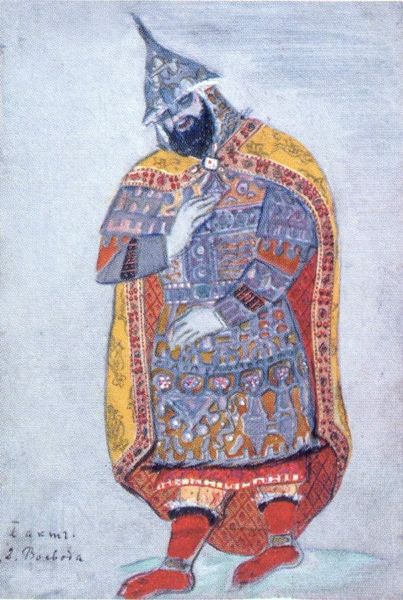
tempera, painting
#
portrait
#
byzantine-art
#
medieval
#
tempera
#
painting
#
figuration
#
christianity
#
christ
Dimensions: 314 x 106 cm
Copyright: Public domain
Editor: This is Andrei Rublev's "Gregory the Theologian," a tempera painting dating to 1408, currently housed in the Assumption Cathedral in Vladimir, Russia. It has a very solemn feel. What significance do you find in this portrayal of Gregory? Curator: The lasting power of icons lies in their symbolic language. Note the book he holds, a signifier of knowledge and divine wisdom, referencing Gregory’s theological contributions. What feelings are evoked by the patterns on his vestments? Editor: They remind me of... coded messages, or maybe architectural plans. Are these common motifs? Curator: The geometric forms represent the earthly and the divine realms, coexisting. In Orthodox iconography, light is uncreated, illuminating the inner spirit. Do you see how the light seems to emanate from within Gregory himself? Editor: Now that you mention it, there is an inner luminescence. The gold background really emphasizes that. Is it meant to represent divinity? Curator: Exactly! The halo signifies divine grace. Think about the role of cultural memory – these symbols are not merely decorative. How do they contribute to Gregory's continued resonance? Editor: So, these visual elements create a sense of timelessness. I guess it’s not just a portrait; it's an embodiment of faith and knowledge, speaking across generations. Curator: Precisely! And this continuity is what makes iconography so compelling. Editor: This really gives me a fresh perspective on the layers of meaning embedded in religious art!
Comments
No comments
Be the first to comment and join the conversation on the ultimate creative platform.
